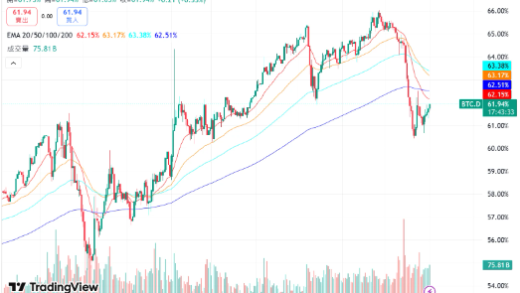1. Industry Risk Analysis
(1) Policy Risk
The tightening of environmental protection policies has put the rust remover industry at risk of a sharp increase in compliance costs. The mandatory promotion of new environmentally friendly alternatives may lead to the market elimination of traditional chemical formulas. Market regulatory authorities have strengthened the requirements for production licenses and ingredient disclosure. Small and medium – sized enterprises face technical barriers and financial pressure in the testing and certification process. The normalization of environmental protection inspections in local chemical industrial parks has reduced production stability, and sudden production restriction policies are likely to cause supply chain disruptions. International hazardous substance control agreements (such as REACH) are constantly being updated, and export – oriented enterprises are facing an upgrade of technical trade barriers. A lag in product iteration may directly result in the loss of overseas market access qualifications.
(2) Economic Risk
Affected by economic cycle fluctuations, the cooling system rust remover industry is facing a double squeeze on demand and costs. During the contraction period of manufacturing investment, industrial enterprises postpone equipment maintenance and upgrade plans, which directly affects the product procurement cycle of the core customer group. The slowdown in the growth rate of the infrastructure industry has led to the shrinkage of the incremental market for cooling systems, and intensified competition in the stock market has triggered price wars. On the raw material side, due to the transmission of global commodity price fluctuations, the cost of petroleum – derived chemical raw materials has fluctuated sharply. Small and medium – sized enterprises have weak bargaining power and are unable to hedge cost risks through inventory adjustment. Under the current economic downward pressure, the contradiction between the extension of customer payment terms and the requirement of suppliers for cash – on – delivery has further intensified the cash – flow pressure. New entrants without differentiated technologies or channel resources are likely to fall into a low – profit red ocean.
(3) Social Risk
The rise of environmental awareness among the younger generation and the cognitive differences with traditional industrial products have intensified industry risks. The tightening of environmental protection restrictions on phosphorus – containing and acidic components on the policy side has forced formula upgrades. However, middle – aged and elderly users’ price sensitivity and lack of trust in new biodegradable products have created a market gap. If brand owners continue to rely on the “heavy – marketing” model of channel铺货, they may fall into the trap of the new trust system where Generation Z’s consumption decisions rely on ingredient transparency and social media word – of – mouth. The loyalty of existing customers shows an inter – generational decline trend with the emergence of environmental protection alternatives.
(4) Legal Risk
Legal risks in the cooling system rust remover industry are concentrated in the fields of environmental protection compliance, safety production, and product liability. Entrepreneurs need to ensure that the production process complies with the Regulations on the Administration of Hazardous Chemicals. Failure to meet environmental protection standards for wastewater and waste gas treatment will result in high – value fines or even production suspension. If the product formula contains prohibited corrosive components (such as excessive strong acids), it may violate the Technical Guidelines for Environmental Risk Assessment of Chemicals and lead to product recall risks. Product labels must strictly comply with the Regulations for Compiling Safety Labels of Chemicals. The lack of hazard warnings or first – aid measure descriptions may lead to consumer lawsuits. In terms of intellectual property rights, imitating the patented formulas of competitors or making false efficacy descriptions such as “non – toxic and harmless” may trigger penalties under the Anti – Unfair Competition Law. Safety production accidents (such as the leakage of corrosive liquids due to improper operation) will be held accountable under the Law on Work Safety.
2. Entrepreneurship Guide
(1) Suggestions on Entrepreneurship Opportunities
Entrepreneurship opportunities in the cooling system rust remover industry are concentrated in the upgrading of environmentally friendly products and the innovation of intelligent services. With the refinement of industrial equipment maintenance and the tightening of environmental protection policies, traditional strong – acid and strong – base rust removers are facing elimination due to problems such as equipment corrosion and environmental pollution. Entrepreneurs can develop environmentally friendly rust removers using biodegradable/nanotechnology and enter vertical fields such as automobile maintenance and power equipment. Under the trend of Industry 4.0, intelligent service packages of “detection – rust removal – protection” can be launched in combination with sensor technology to monitor the rust status of equipment in real – time through the Internet of Things. Currently, the outsourcing demand for rust removal from small and medium – sized manufacturing enterprises has increased sharply. A regional rapid – response service network can be established, equipped with an online reservation and rust removal effect tracking system. At the same time, customized rust removal solutions for specific equipment such as boilers and condensers can be developed, and accurate customer acquisition can be achieved through B – end channels such as industrial exhibitions and cooperation with equipment original manufacturers.
(2) Suggestions on Entrepreneurship Resources
Focus on supply chain integration and technology resource acquisition. Give priority to establishing long – term and stable cooperation with chemical raw material suppliers. Reduce raw material costs through bulk purchase agreements, and at the same time, lock in OEM manufacturers with hazardous chemical production qualifications. Cooperate with university chemical laboratories to conduct formula iteration tests and obtain third – party test reports to enhance product competitiveness. Focus on connecting with the resources of industrial equipment maintenance associations, and establish market trust through trial use by member enterprises. Take advantage of the environmental protection policy support of local industrial parks to complete the business license for hazardous chemicals and sewage registration. 20% of the funds should be reserved as cash flow for sudden environmental protection inspection rectifications. Connect to B2B channels such as 1688 Industrial Products and JD Enterprise Purchase, and use the prepayment model to relieve inventory pressure.
(3) Suggestions on Entrepreneurship Teams
In the cooling system rust remover industry, an entrepreneurship team needs to be equipped with three core capabilities: technology R & D (personnel with a chemical engineering background to solve formula safety and environmental protection certification), market operation (those with channel resources in the industrial equipment maintenance field to expand B – end customers), and supply chain management (practical talents familiar with chemical raw material procurement and hazardous chemical storage and transportation). It is recommended to give priority to recruiting members with personal connections in downstream application scenarios such as automobile manufacturing and power equipment. Team members need to form a two – way cooperation mechanism between technology verification and commercialization. Obtain feedback from the factory side quickly through small – batch samples, and establish the ability to dynamically match technical parameters with customer cost sensitivity.
(4) Suggestions on Entrepreneurship Risks
Entrepreneurs in the cooling system rust remover industry need to focus on controlling the following risks: Give priority to completing environmental protection and chemical safety certifications, and cooperate with compliance institutions to avoid legal risks. Establish a strict product quality inspection process and keep test reports to ensure that the rust removal effect and metal compatibility meet the standards. Select qualified and stable chemical raw material suppliers and sign long – term agreements to hedge price fluctuations. Focus on niche markets (such as industrial equipment maintenance or automobile maintenance scenarios) to establish differentiated product solutions, and strengthen customer trust through small – batch trials. Develop a light – asset operation plan, control the initial inventory and production line investment, and use the prepayment or payment term management model to ensure cash – flow safety.





